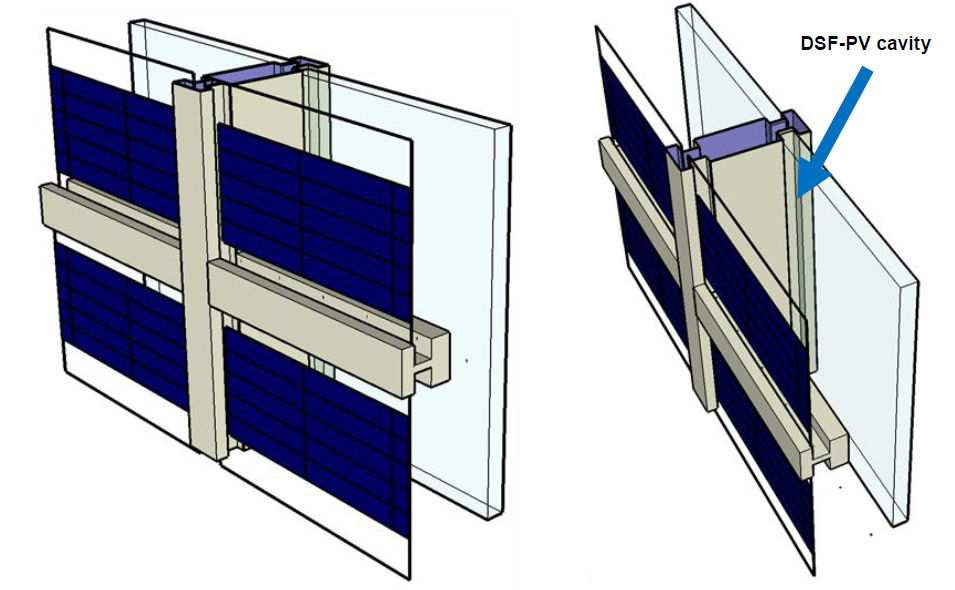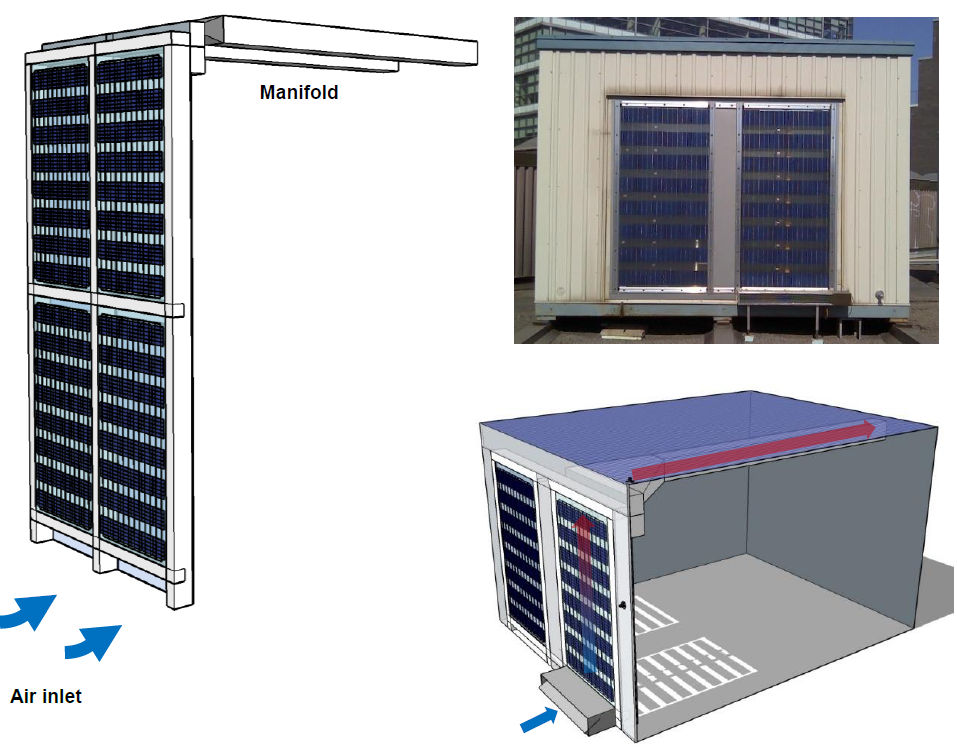Brief Concept Description
Advanced Double Skin Façades (DSFs) can be identified as one of the most promising responsive building elements. In the last years, they have gained a rising attention due to their high potential to achieve energy, comfort, aesthetic and structural advantages, as well as to provide space for integrated PV panels. DSFs are one of the buildings key new features and their use in combination with PVs (DSF-PV) become particularly favourable in case of high-rise buildings where the wide exposed envelope area can be used to harvest solar energy.
DSFs typically consist of an exterior and an interior skin separated by a ventilated air cavity used as air channel and thermal buffer. This solution applies to new construction but also to refurbishment actions, where an external skin is added to the existing envelope. The air cavity of the DSF creates a microclimate around the building, enhancing its climate resilience and its adaptability to weather changes. Additionally, the temperature differences inside the air cavity can facilitate natural/hybrid ventilation or can be exploited for heat recovery purposes, reducing in this way the space heating or cooling loads of the building. Moreover, the addition of an external layer is a valid opportunity to integrate photovoltaics, which is normally a cost-effective investment to further improve the energy performance of the building.
Architectural and Technological Integration into the Envelope
In DSFs, the exterior skin acts as the exterior layer of the envelope, protecting it from the weather phenomena, while the cavity provides pressure equalization and keeps the water from entering the envelope. There are different ways to integrate the semi-transparent PV in the envelope of the building to form a double skin façade. The most practical way is by utilizing a curtain wall approach, where the semi-transparent PV modules are secured on the mullions with pressure plates and the width of the mullion is the width of the DSF-PV cavity

Figure 74. Architectural integration of DSF-PV in a curtain wall design.
Integration into the Building: System and Comfort
In order to operate, the use of fans and dampers for the DSF-PV is required. The fan cools down the semitransparent PV panels and drives the pre-heated air towards the mechanical ventilation system of the building and for these reasons is one of the most important elements for the coupling between DSF and building (Figure 75). The development of suitable strategies to control fan and dampers of the DSF-PV system can increase the efficiency of the system, but, if such strategies are not thoroughly investigated, occupants might perceive discomfort. For example, a fan working over the appropriate set-point might generate excessive noise disturbing the occupants, cooling down the interior glass of the DSF-PV to a point where occupants experience thermal discomfort.
In addition, the electrical connection between PV panels and inverters is a challenging task that has to be considered when integrating photovoltaics.

Figure 75. On the left, a two story DSF-PV system in a curtain wall design. On the right, photo and rendering of the experimental test-hut located at Concordia University depicting a DSF-PV.